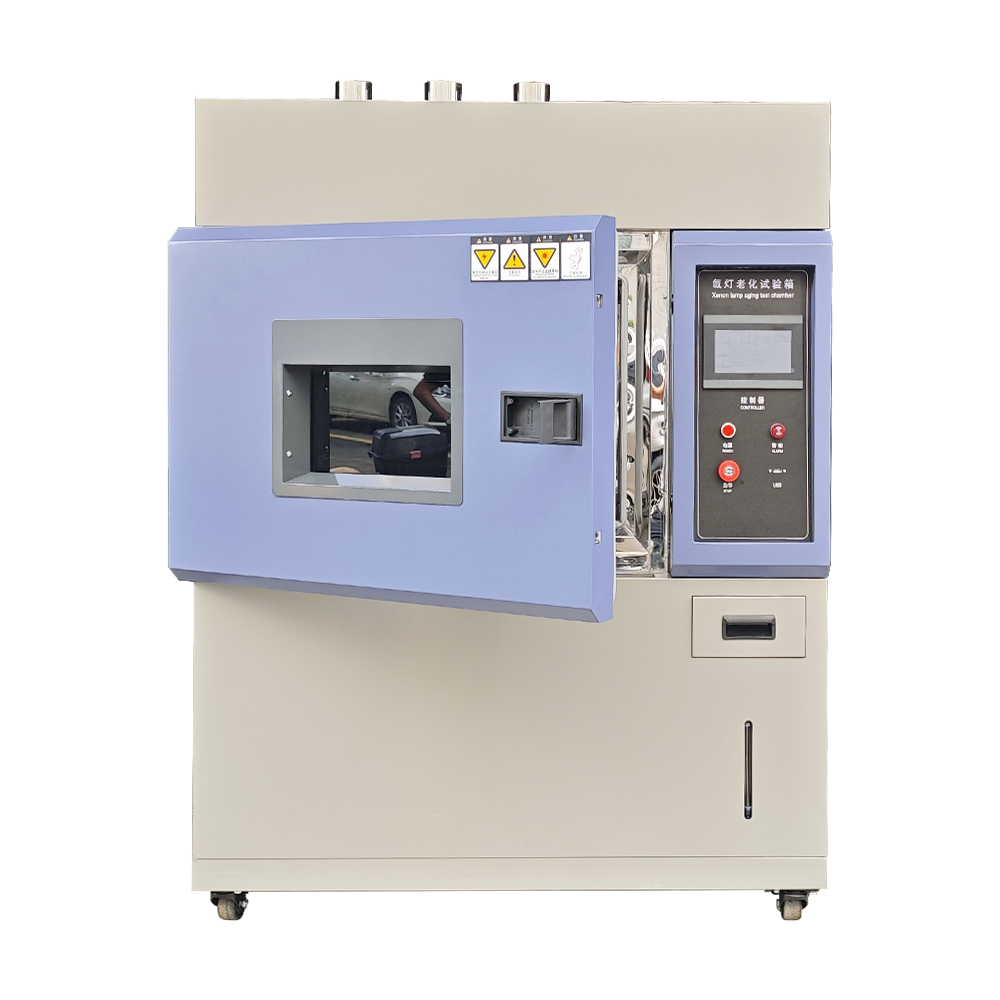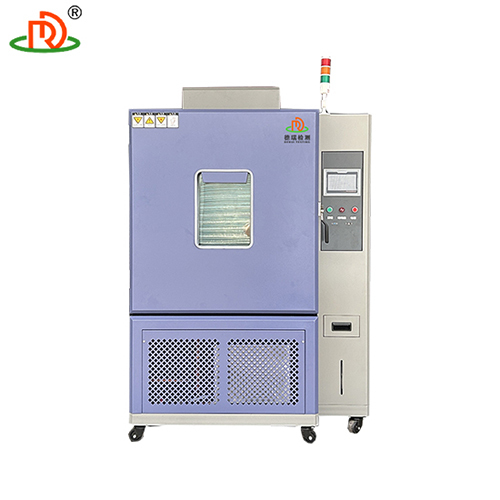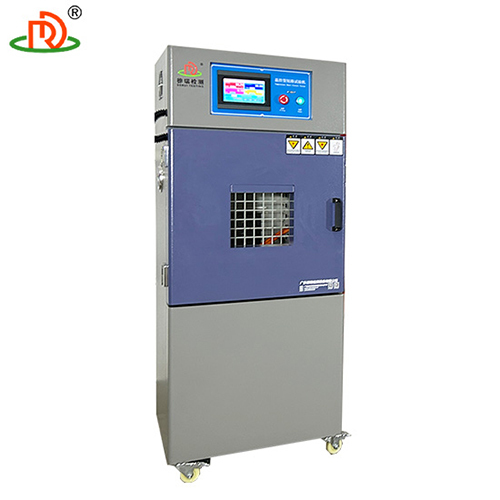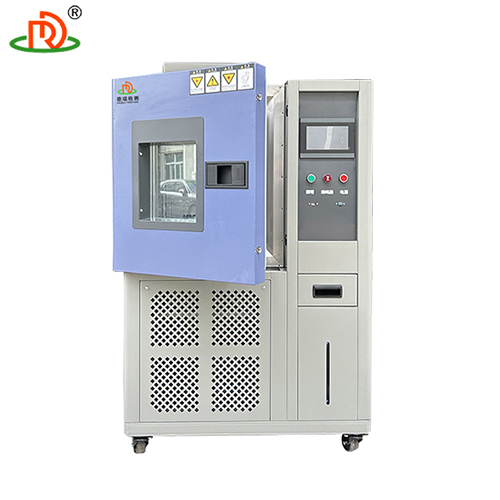
xenon aging test chamber manufacturers
418005.0 INR/Unit
Product Details:
X
xenon aging test chamber manufacturers Price And Quantity
- 418005.0 INR/Unit
- 1 Unit
xenon aging test chamber manufacturers Trade Information
- Cash in Advance (CID)
- 100 Unit Per Month
- 7 Days
- All India
Product Description
xenon aging test chamber Standard Features
| Model | DR-H301 |
| Internal dimension (WxDxH) | 500*600*500mm |
| External dimension (WxDxH) | 1000*1000*1750mm |
| Temperature range | RT+10~ 60 (suggest to use 402) |
| Temperature Fluctuation | 1 |
| Ozone concentration | 50~1000 pphm, adjustable |
| Ozone concentration deviation | 10% |
| Sample holder | SUS#304 stainless steel |
| Temperature controller | Programmable touch screen controller |
| Ozone concentration analysis | Concentration analysis meter |
| Ozone generator | High pressure silence discharge type |
| Protection system | Leakage, short circuit, over temperature, over heat |
| Test criteria | ASTM D1149, ISO 1431, JIS K6259... |
Installation steps
1. Site preparation
Space planning: Reserve operation and maintenance channels (front and back 1m, left and right 0.8m) based on equipment size (such as model DR-H301-1 size 1000 * 1000 * 1750mm).
Pre embedded water and electricity:
Power cord: It is recommended to use a 6mm copper core wire with an independent air switch (with overload protection).
Drainage pipe: diameter 50mm, slope 5 , connected to laboratory wastewater treatment system.
2. Equipment handling and positioning
Use forklifts or lifting equipment (with forklift slots reserved at the bottom), and it is strictly prohibited to tilt beyond degrees.
Adjust the anchor bolts after placement, and calibrate the levelness of the equipment with a level gauge (error 2mm/m).
3. Water and electricity connection
Power connection:
1. Confirm that the phase sequence is correct (L1/L2/L3 and N lines cannot be reversed).
2. Use a multimeter to detect voltage fluctuations of 10%.
Waterway connection (optional function):
1. Connect the deionized water pipeline and install a pressure reducing valve and flow meter (0.5~2L/min).
2. Install U-shaped elbows on drainage pipes to prevent gas backflow.
4. System initialization
1. Power on self-test:
Turn on the main power, and the touch screen will automatically detect the status of sensors, xenon lamps, and temperature and humidity modules after startup.
If there is an alarm prompt (such as E01: temperature sensor fault), follow the prompt to troubleshoot.
2. First calibration:
Use a standard radiometer (such as 340nm band) to calibrate the light intensity, and adjust the position of the lamp tube when the error is greater than 5%.
3. Trial operation test:
Run the 'standard cycle program' without load (60 minutes of light exposure+10 minutes of spraying), and observe whether the temperature and humidity fluctuations are within 2% range.
Key precautions
Safety protection:
An independent leakage protector must be installed, and it is prohibited to share the circuit with other high-power equipment.
When the xenon lamp is lit, it is strictly prohibited to look directly at the light source, and the test chamber door must not be opened while the equipment is running.
Maintenance tips:
Clean the filter and lamp surface every 500 hours (wipe with anhydrous ethanol).
Replace the xenon lamp every 2000 hours (even if it is not damaged, spectral attenuation may affect test accuracy).
Fault prevention:
When the ambient temperature exceeds 35 , the overheat protection shutdown will be automatically triggered.
Regularly check the water level in the water tank (recommended once a week) to avoid damage to the water pump due to idling.
Derui Testing is a professional manufacturer of environmental testing equipment, providing a variety of testing equipment including xenon lamp aging test chambers. The xenon lamp aging test chamber is mainly used to simulate various comprehensive climate conditions such as solar radiation, temperature, humidity, condensation, rain, etc., to evaluate the weather resistance and aging performance of materials and products in atmospheric environments.
Tell us about your requirement

Price:
Quantity
Select Unit
- 50
- 100
- 200
- 250
- 500
- 1000+
Additional detail
Mobile number
Email








 English
English Spanish
Spanish French
French German
German Italian
Italian Chinese (Simplified)
Chinese (Simplified) Japanese
Japanese Korean
Korean Arabic
Arabic Portuguese
Portuguese